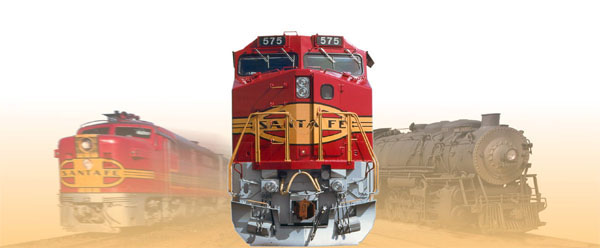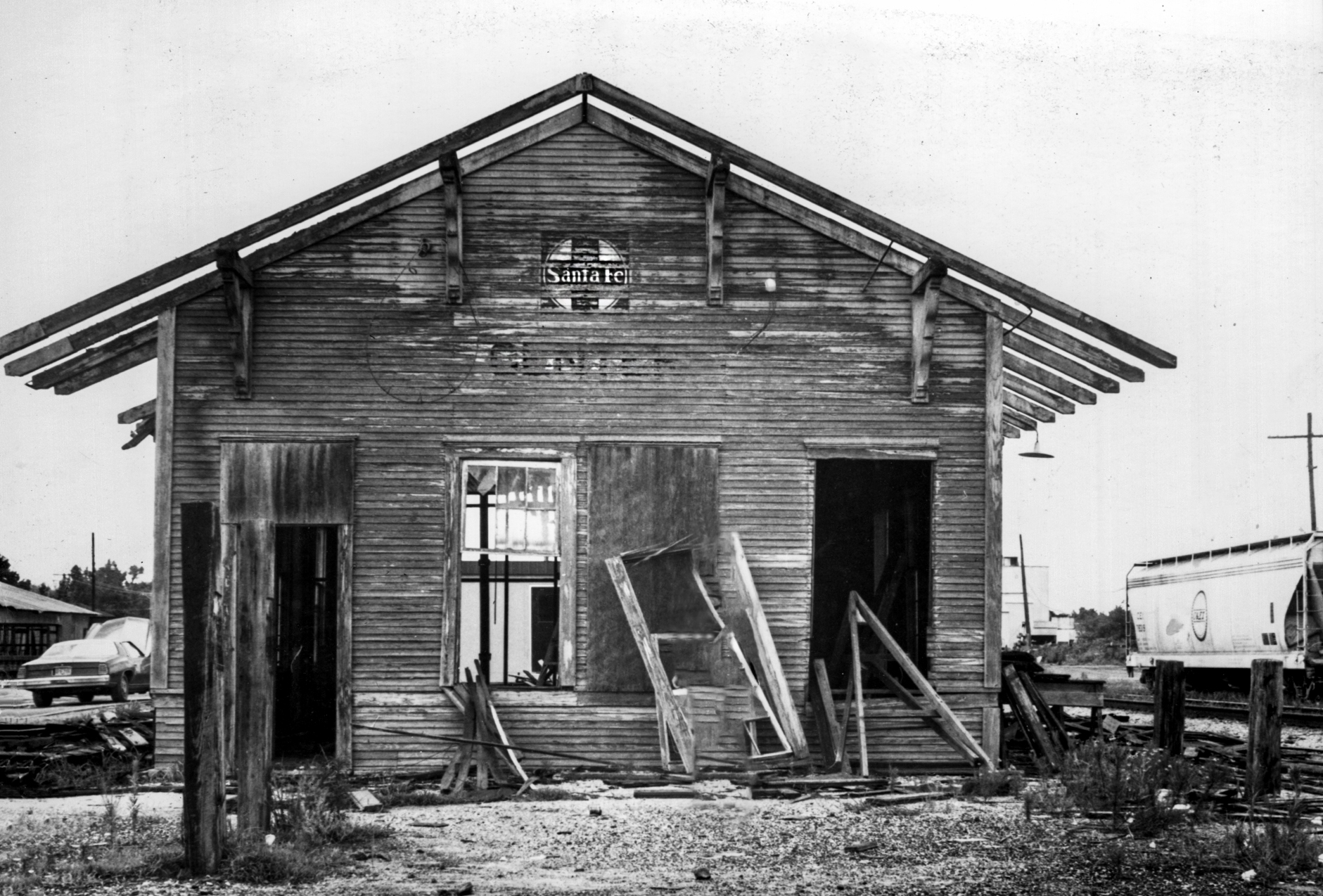
Santa Fe Railway Station - Center, Texas

The first depot in Center was build in 1902 when the railroad came through from Beaumont to Longview. This depot burned in 1912 and another was erected, which was demolished in 1979.
In 1902 the Santa Fe R.R. Station
was painted a bright red and later a bright yellow. There are many memories
attached to this depot. During the 1930's and 1940's the movie reels were shipped by
means of the train from Longview to Beaumont. On a few occasions, the train was
delayed due to storm and a track wash away. This delay caused the Rio Theatre to
delay the showing of the films. (This was usually on Sunday). At other times
Mr. George Smith drove to rescue the film and no one knew of the problem.
One would gather at the station to observe the
trains arrival and departure. The excitement of hearing the train's whistle in the
distance and how the train chugged to a stop, blowing white steam and smelling of coal
burning would bring people from their cars or the Waiting Room. The train usually
rolled to a stop at the wooden water tank near the depot to be filled with water in order
to continue its journey. The water tank was used by some (boys) to cool off by
climbing to the top and jumping in for a short swim. You could always tell
when the time was near, because the freight/luggage conveyor was brought out to load and
unload shipments.
The waiting room was a popular gathering place
to wait for the Santa Fe trains to come and go. Passengers slept on the wooden benches
while waiting for their train.
The click of the telegraph machine could be
heard all during the day as that was the way Center received the latest news. News
like baseball scores were sent to the office and they were relayed to town to the drug
stores. The latest news could be read on the plate glass windows of these drug
stores. The clerk wrote the news on the windows with powdered chalk mixed with
water. News of the United States declaring war on Germany in 1917 was first brought in by
wire at the depot and was soon known throughout the town.
Remember the sadness to the train and depot,
during World War I when recruits were leaving to got to training camps and their mothers,
wives and sweethearts watch them depart. Many of the county's young men were killed
in the war and their bodies were returned to Center for burial wrapped in the United
States Flag. The soldier's bodies were shipped in the baggage coach of the
train.
During World War II, news of the death of a
person in the military was relayed to the families by the means of the telegram, which was
sent by the telegraph machine.
There were many happier times as one waited for
relatives to come for a visit, or students to return from college for holiday vacations.
Buster Brown and his dog Tie traveled the rails in a private Pullman Car for his annual
visit to Center to advertise Buster Brown Shoes. His arrival at the depot was
another exciting event as Buster Brown performed for all at the railroad station before
traveling by car to the square. It is sad that the station had to be demolished and
not saved as a history of that time for future generations to admire.
 |
In the photograph are T. J. Hotline, the large man without coat. The man in the black suit could probably be Price Ramsey according to J.B. Sanders. The young man sitting by the window was the brother of J.B. Sanders. The person sitting was Julius G. "Jack" Garrett. The station building was purchased by J.R. Doyen, local agent of the railroad who demolished the depot and used the lumber in the building of his home and barn.
SPECIAL ADDITIONAL NOTE:
I am Fred Doyen, and John Doyen was my father.
He was the agent in Center you reference in your article. Please revise your
article so as not to cast blame on my father for destruction of the Center depot. He
bought the lumber of the building, which was about to be demolished by the railroad to
make room for another structure. It was not his choice to destroy the building,
since it was of sentimental value to him, as well, but it was a requirement of
 |
 |
Shame !
Edited from the files of Mattie Dellinger